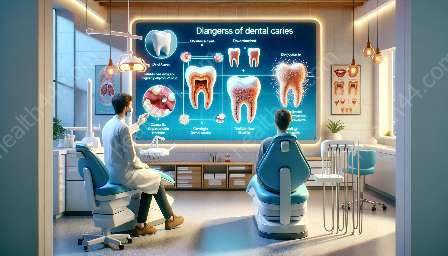Oral cancer is a serious and potentially life-threatening condition that can have significant effects on overall health. Early detection plays a crucial role in improving the prognosis and quality of life for individuals affected by this disease. Fortunately, advancements in oral cancer screening and detection technology have revolutionized the way oral health professionals identify and manage this condition. In this comprehensive guide, we explore the latest innovations in oral cancer screening and detection technology and their potential impact on oral health.
The Significance of Oral Cancer Screening
Oral cancer is among the most common types of cancer globally, and its incidence continues to rise. The condition can have devastating effects, not only on oral health but also on overall well-being. Early detection is essential for successful treatment, and regular screening is a critical component of oral health maintenance.
Traditional Screening Methods
Historically, oral cancer screenings relied on visual and tactile examinations, where oral health professionals visually inspected the oral cavity and palpated the head and neck region for any abnormalities or suspicious lesions. While these methods remain valuable, they have limitations in detecting early-stage or subtle changes indicative of oral cancer.
Enhanced Visual Assessment
One of the most significant innovations in oral cancer screening technology is the development of enhanced visual assessment tools. These tools utilize advanced imaging techniques, such as tissue fluorescence visualization and narrow-band imaging, to identify potentially malignant or precancerous oral lesions that may not be readily visible with the naked eye. By enhancing the visibility of suspicious areas, these tools enable more accurate and timely detection of oral cancer.
Salivary Biomarkers
Another area of innovation focuses on the use of salivary biomarkers for oral cancer screening and detection. Research has identified specific biomolecules present in saliva that can serve as indicators of oral cancer risk. By analyzing these biomarkers through non-invasive techniques, such as saliva tests or oral rinse examinations, oral health professionals can obtain valuable insights into a patient's oral cancer risk profile, allowing for early intervention and personalized monitoring.
3D Imaging and Artificial Intelligence
Advancements in imaging technology, including the integration of 3D imaging and artificial intelligence (AI), have also significantly contributed to the improvement of oral cancer screening and detection. 3D imaging modalities provide detailed visualization of oral structures, allowing for comprehensive assessment of tissue morphology and early identification of potentially abnormal areas. AI algorithms can further analyze these images, assisting in the identification of minute deviations or patterns indicative of oral cancer, thereby enhancing the accuracy of screening and diagnosis.
Impact on Oral Health
The integration of these innovative technologies into oral cancer screening and detection has profound implications for oral health. By enabling earlier and more accurate identification of oral cancer risk, these advancements empower oral health professionals to implement targeted preventive measures and interventions. Early detection not only improves the chances of successful treatment but also reduces the potential for severe oral health complications associated with advanced-stage oral cancer.
Effects of Poor Oral Health
Poor oral health significantly increases the risk of various oral conditions, including oral cancer. Neglecting oral hygiene, avoiding regular dental check-ups, and engaging in harmful habits, such as tobacco use or excessive alcohol consumption, can contribute to the development of oral cancer. The adverse effects of poor oral health extend beyond the oral cavity, impacting overall well-being and increasing the burden of healthcare costs.
Oral Cancer Screening as a Preventive Measure
Given the detrimental effects of poor oral health on overall well-being, oral cancer screening emerges as a crucial preventive measure. The availability of innovative screening and detection technologies enhances the feasibility and effectiveness of regular oral cancer screenings, encouraging individuals to prioritize their oral health and seek timely intervention if any concerns arise.
Conclusion
In conclusion, innovations in oral cancer screening and detection technology represent a significant advancement in oral healthcare. These innovations offer a proactive approach to identifying and managing oral cancer, ultimately leading to improved outcomes for individuals at risk. By embracing these technologies and promoting regular oral cancer screenings, the dental community can make substantial progress in addressing the impact of poor oral health and minimizing the burden of oral cancer on overall well-being.



